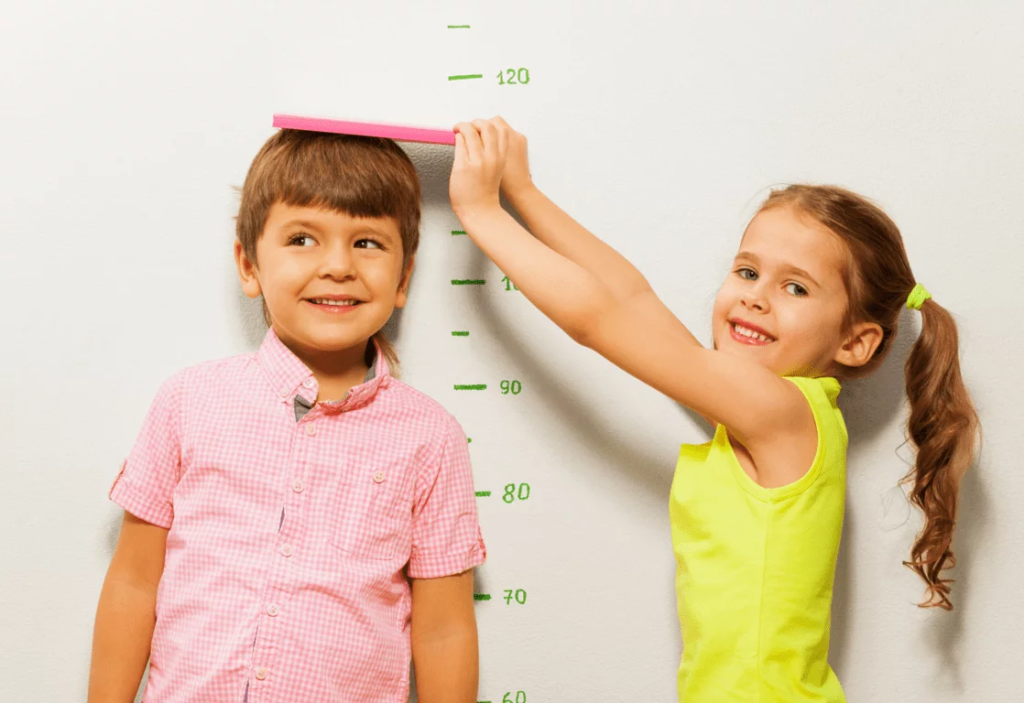The average height 3 year old boy typically reaches is between 36 and 38 inches. This is a significant period in early childhood development. It’s the age when toddlerhood gives way to more structured physical growth, clearer communication, and sharper motor coordination.

At three years old, height becomes more than just a number. It’s a marker. A tool that pediatricians and parents use to track whether a child is developing on schedule. Growth charts become more meaningful at this age because trends become clearer, and consistency matters more.
While genetics still rule the game, nutrition, sleep, and physical activity begin to show a stronger influence. At this stage, height not only correlates with past growth but also offers hints about what’s to come in the next two to five years.
Why 3 Years Old Is a Crucial Milestone
Three years old is a transition point. The body begins to outgrow the rapid gains of babyhood. Height gains slow, but bones strengthen. Muscles grow more defined. Internal systems—immune, digestive, endocrine—start to mature in sync.
At this stage:
- Children grow around 2.5 to 3.5 inches per year
- Muscle mass increases steadily
- Growth is more predictable than during infant years
The average height 3 year old boy reflects the beginning of consistent tracking—where deviation patterns may signal developmental concerns.
How Growth Charts Work
Growth charts compare a child’s height, weight, and head circumference with a standardized population. Most pediatricians use CDC or WHO charts. A boy in the 50th percentile for height, for example, means he’s taller than 50% of boys his age.
It’s not about hitting 100%. It’s about tracking steady progression over time. Parents should focus on trajectory—not rankings. Staying within one percentile band over the years matters more than being at the top in one checkup.
Global Averages for Height at Age Three
While genetics play a big role, regional environments influence how tall a child might grow:
- United States: 37.5 inches
- United Kingdom: 37.2 inches
- India: 36 inches
- Nigeria: 36.5 inches
- South Korea: 37.8 inches
- Brazil: 37 inches
Disparities often stem from nutrition, healthcare access, and maternal health. These numbers can serve as rough benchmarks but aren’t definitive.
Key Factors That Influence Height at Age Three
Let’s break them down:
- Genetics: The most dominant factor. Tall parents = taller kids.
- Nutrition: Inadequate protein or vitamin D can limit bone development.
- Physical Activity: Movement boosts muscle tone and posture, aiding proper height.
- Sleep: Growth hormone peaks during deep sleep cycles.
- Stress: Emotional or physical stress can suppress hormone levels, delaying growth.
- Illness: Frequent infections, gut issues, or chronic conditions can hinder normal growth.
The Role of Gender Differences
By age three, the height difference between boys and girls is minor—usually around 0.5 inches. Boys tend to be slightly taller, but individual variation can easily blur the gap.
What’s more important is the consistency in their growth. A sudden drop from a higher percentile could flag a deeper health issue, regardless of gender.
What Pediatricians Look For
A pediatrician examines:
- Consistency across growth checkups
- Proportional development (height vs weight)
- Delays compared to parental height predictions
- Response to nutrition and physical activity
They may conduct bone age scans or hormone testing if a major drop is observed in the child’s height percentile.
Early Signs of Delayed Growth
Watch for these indicators:
- No change in clothing size over 12 months
- Persistent fatigue despite sleep
- Visible asymmetry or poor posture
- Feeding issues or poor appetite
- A significant gap between height and weight percentiles
Boosting Healthy Growth Naturally
You don’t need supplements or growth enhancers. Instead, focus on:
- Whole foods: fruits, vegetables, lean protein, and dairy
- Consistent sleep: 10–13 hours including naps
- Active play: 60 minutes of daily movement
- Hydration: water instead of sugary drinks
- Reduced screen time: too much sedentary time can impact development
These habits, established early, have long-term payoff.
Should You Be Concerned If a Child Is Below Average?
Not immediately. Every child has their own growth rhythm. A lower height could simply mean a late bloomer or a different genetic makeup. Pediatricians will only investigate further if the child drops off the chart or shows other red flags.
The average height 3 year old boy reflects a statistical middle—not a mandate. Falling above or below doesn’t indicate superiority or deficiency. It’s a guide.
Height and Intelligence: Is There a Link?
No direct connection exists between height and intelligence. Height reflects bone development and physical health. Brain development relies more on stimulation, environment, and genetics. Shorter children are just as capable of cognitive success as taller peers.
Tracking Growth at Home
To track progress:
- Use a wall ruler or removable growth chart
- Measure at the same time of day, preferably in the morning
- Make sure the child is barefoot and standing straight
- Mark monthly or quarterly milestones
- Keep notes alongside sleep, food intake, and activity logs
Creating a home tracking routine fosters awareness and engagement without stress.
Common Myths About Height
- “Tall toddlers stay tall forever.”
Not always. Puberty timing affects final height. - “Short boys need hormone treatment.”
Rarely true. Only medically diagnosed hormone deficiencies warrant treatment. - “Drinking milk daily makes kids tall.”
Milk helps—but it’s just one part of a balanced diet.
The Impact of Environment
Even indoor air quality and exposure to secondhand smoke can influence a child’s ability to grow properly. Urban children might grow slower due to pollution or limited green spaces. Conversely, kids with outdoor play options may see better muscular and skeletal development.
What If Your Child Is Much Taller Than Average?
A boy in the 90th percentile might be genetically predisposed to greater height—or he could be entering early puberty. If the growth pace remains steady and proportional, it’s not a concern. But irregular spurts should be monitored.
Cultural Expectations Around Height
In some societies, taller height is linked to strength or leadership. Others value modesty and small stature. Parents should separate cultural bias from clinical guidance. A child’s worth isn’t determined by his height percentile.
Preparing for Preschool and Physical Expectations
Understanding your child’s height helps when:
- Buying the right clothing
- Choosing safe playground equipment
- Selecting booster seats
- Measuring nutritional needs
- Planning sleep routines
Preschool teachers often use height to arrange groups, sports, or seat placement.
Looking Ahead: What Comes After Age 3
Post age three, children grow more predictably:
- Around 2–3 inches per year
- Most triple their birth height by age 4
- Growth spurts appear closer to ages 6–8
- Final adult height solidifies after puberty
So tracking now gives insight into long-term patterns.
Average Height 3 Year Old Boy: Final Thoughts
The average height 3 year old boy typically falls around 37 inches. But height isn’t a finish line—it’s part of a broader picture. Genetics, nutrition, sleep, and movement all play key roles. Focus on what’s controllable, monitor trends, and let doctors guide the rest. Every child grows at their own pace.
Average Height for 2 Year Old: Growth Insights
Average Height of a Desk: Ergonomic Insights
Average Height of a 4 Year-Old in Feet: Growth Insights
